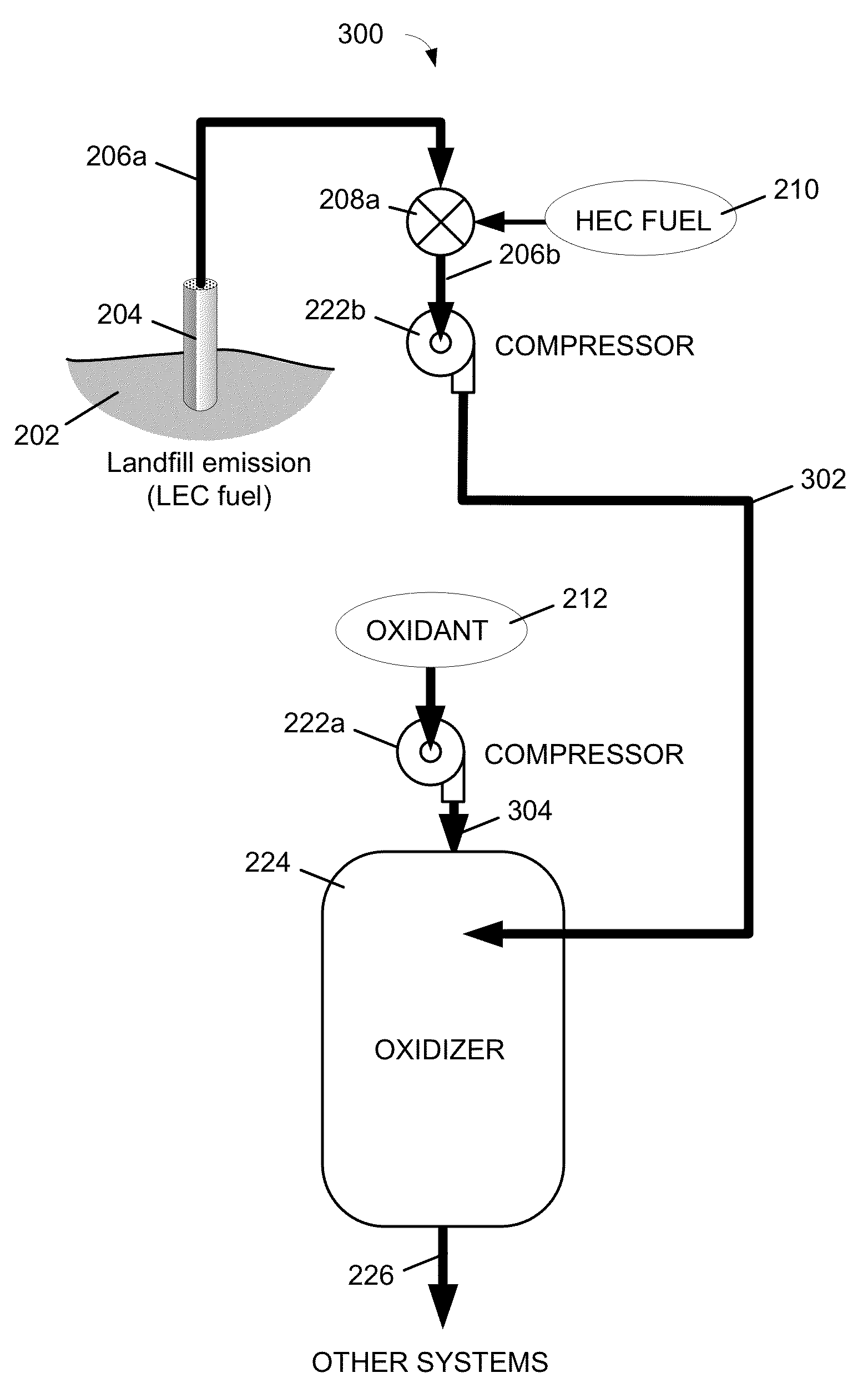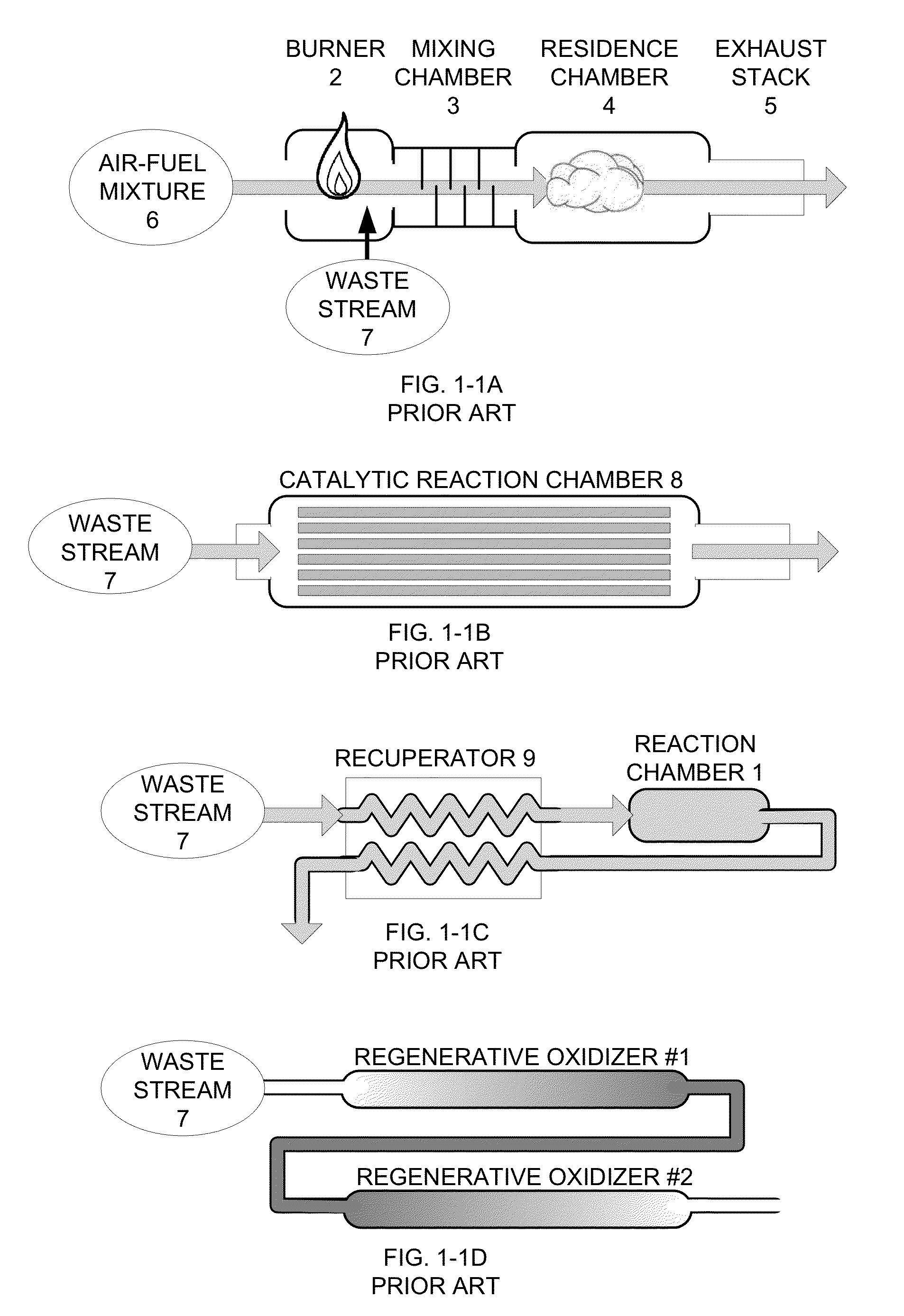Gradual oxidation with heat transfer
a heat transfer and oxidation technology, applied in heat recovery, combustion types, greenhouse gas reduction, etc., can solve the problems of rare and expensive noble metal catalysts, catalysts can have challenges, and hec fuel is burned to provide hea
- Summary
- Abstract
- Description
- Claims
- Application Information
AI Technical Summary
Benefits of technology
Problems solved by technology
Method used
Image
Examples
Embodiment Construction
[0192]The following description discloses embodiments of a system for oxidation of a gas that comprises an oxidizable fuel. In certain embodiments, the system includes an oxidizer that can operate to gradually oxidize fuel while maintaining a temperature within the oxidizer below a flameout temperature, so that formation of undesirable pollutants, e.g., nitrogen oxide (NOx) and carbon monoxide (CO), is significantly limited. The fuel desirably enters the oxidizer at or near an autoignition temperature of the fuel. The system is particularly adapted for utilization of a fuel with low energy content, such as a methane content below 5%, in a sustainable gradual oxidation process to drive a turbine that further drives a power generator as well as driving a compressor in the system.
[0193]In the following detailed description, numerous specific details are set forth to provide an understanding of the present disclosure. It will be apparent, however, to one ordinarily skilled in the art th...
PUM
 Login to View More
Login to View More Abstract
Description
Claims
Application Information
 Login to View More
Login to View More - R&D
- Intellectual Property
- Life Sciences
- Materials
- Tech Scout
- Unparalleled Data Quality
- Higher Quality Content
- 60% Fewer Hallucinations
Browse by: Latest US Patents, China's latest patents, Technical Efficacy Thesaurus, Application Domain, Technology Topic, Popular Technical Reports.
© 2025 PatSnap. All rights reserved.Legal|Privacy policy|Modern Slavery Act Transparency Statement|Sitemap|About US| Contact US: help@patsnap.com



